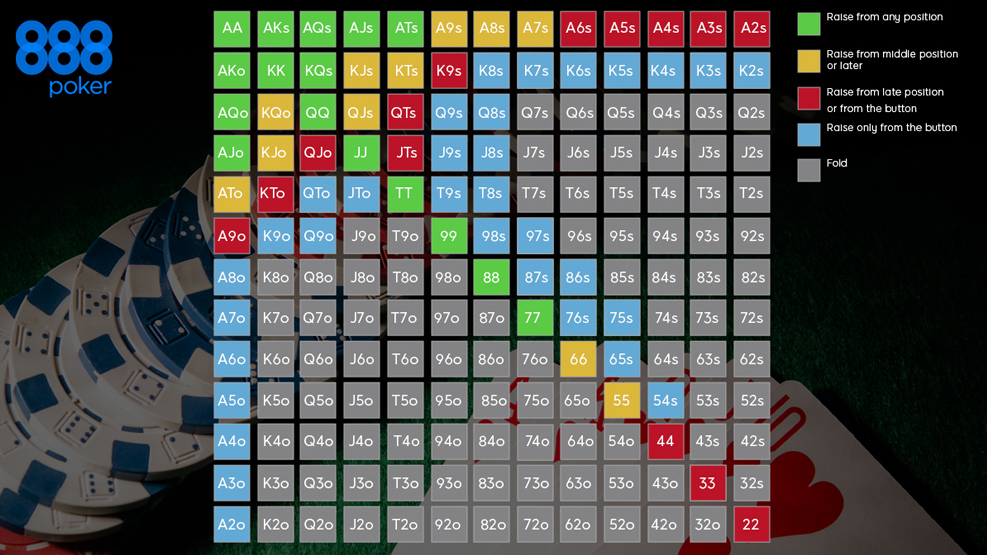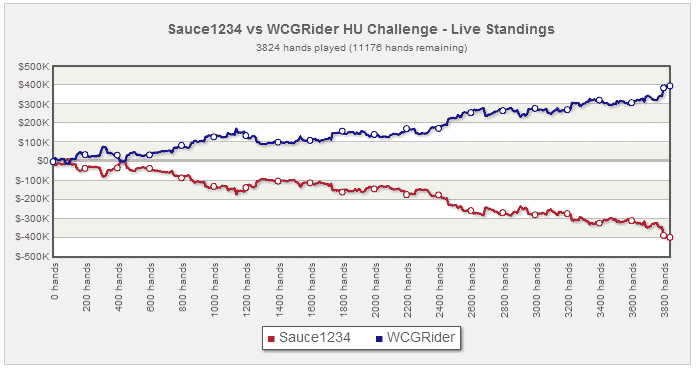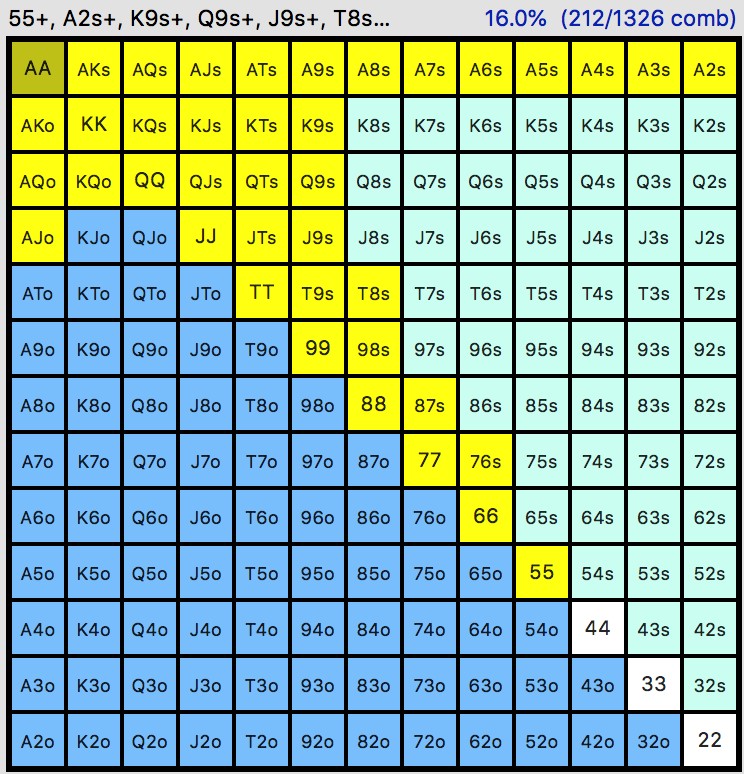- Heads Up No Limit Texas Holdem Strategy Heads up play is arguably the most difficult form of Texas Hold ‘em. It takes some time getting used to because it constantly forces you to make marginal decisions. If you fold most of your starting hands, you’ll get run over – it forces you to play many pots with weak hands.
- Nov 20, 2020 Heads Up Hold’em is a table poker game where the object is to make your best five-card hand using two hole cards and five community cards. Unlike traditional poker, the goal of this game is to beat the dealer. Payouts are based on whether you win the hand. Prior to receiving cards, you must place an Ante and Odds wager.
Heads Up No Limit Texas Holdem Strategy Heads up play is arguably the most difficult form of Texas Hold ‘em. It takes some time getting used to because it constantly forces you to make marginal decisions. If you fold most of your starting hands, you’ll get run over – it forces you to play many pots with weak hands.
Playing heads up poker requires a new set of skills and can be challenging. Even if you do not play heads up by choice, you may find yourself playing heads-up at the end of tournaments, or in blind vs blind situations.
So, learning heads up texas Holdem strategy is a must for all players!

What’s heads up poker?
Heads-up poker is poker against a single opponent. It can occur at the final stage of tournaments but is also a designated poker variety.
The dynamics of heads-up poker are quite different. With only two players competing, hands are often won by weak hands at showdown. Also, with only one opponent to challenge the blinds, aggression is a must! Many hands that would be considered marginal at best in a multiplayer table are now very playable.
Who deals in heads up poker?
In heads up, the blinds are posted differently. It is the dealer that posts the small blind and acts first before the flop. After the flop, he will have position on his opponent!
Let’s take a look at the required skillset and how to adapt to different situations and opponents.
Heads up is personal
Heads-up play is more personal than multiplayer poker. In multiplayer poker, you are competing against many, but in heads up, you measure up against one player.
You keep competing until skill or luck forces one to go broke or retreat! So it is crucial to have a winning attitude and be comfortable in measuring up your skills, even taking some hits on your ego. If you have the skill, patience, and luck, winning all of your opponents’ chips can be very rewarding!
Is heads up poker profitable?
As you only play against one opponent, choosing your battles is very important. In a full table, it is ok to have a couple of skilled players playing against you. You can play carefully against them and exploit your edge against the weaker ones.
In heads-up, you cannot afford to sit against a skilled opponent that is as good or better than you! However, if you learn the fundamentals and play against the right opponent, heads up poker can be very profitable!
Aggression is even more important!
Most professional poker players that excel in heads up poker are intrinsically aggressive. In heads-up, you are competing for the blinds against a single opponent each time. Therefore, the dynamics of the hands shift radically towards even more aggressive play!
If you keep playing aggressive poker, your opponent will be forced to make many difficult decisions. Many players dislike making hard decisions. Therefore, when they face a very aggressive player, they tend to tighten up and wait for monster hands to raise with.

This is a very profitable situation, as you can outmaneuver players that play that way. Most of the time, they will fold their hand preflop and you will pick up the blinds. Even when they don’t, they will be reluctant to continue with their hand if they do not connect with the flop. When they play back at you, you can expect that they are strong and fold.
Starting hands
In heads up poker, hands that can make monster hands like straights and flushes, and win substantial multiplayer pots lose some of their value. A big part of the value of drawing hands comes from their implied odds of making a big hand and getting paid off! With only one opponent, it isn’t easy to extract a lot of value from them.
This is the case for suited and connected hands and even small pairs that can flop sets. You still prefer your hands to be connected or suited, as they have a higher chance of winning by making a straight or flush. However, when they make such a hand, the implied odds are much slimmer than in a multiplayer pot.
On the contrary, big broadway cards go up in value as top pair types of hands have a higher chance of holding up.
Overall, it is more important your cards are high in rank than they are suited and connected.
When you miss the flop in a multiplayer pot, chances are someone has connected, and you are trailing. Even with a pocket pair, if the flop brings one or two overcards, you are probably in bad shape.
However, when playing heads up, you only have a single opponent to worry about.

Ace high
Also, in heads up, hands are often won with one pair or even high card. So having an ace in your hole cards is powerful. Any ace is considered a strong hand. Your opponent’s chances of also having an ace are less than 12%, so you are less concerned about your kicker.
Pocket pairs
Playing a pocket pair against many opponents can be tricky. When you see one or two overcards on the flop, chances are someone has you beat!
Heads Up Hold'em Strategy Poker
However, heads up, hands are often won with high-card, bottom pair, or middle pair. Therefore, you can expect your pair to hold up many times. You can play pocket pairs post-flop as if they are ahead, even if they do not improve. Do not be afraid to bet for value and protection, and if you encounter resistance, you can re-evaluate the situation.
Playing against an overly aggressive player
Heads-up play requires an aggressive approach. Facing a skilled, aggressive player heads-up can be very challenging. Do not get intimidated, and try to find the right opportunities to fight back. Remember that most aggressive players seek to pick-up small pots but do not want to get into big confrontations and risk many chips.
If your opponent is overly aggressive, his strategy becomes unbalanced, and there are ways to exploit it. Harrington, in the classic “Harrington on Hold ’em: Expert Strategy for No-limit Tournaments. Volume I” proposes two strategies.
The hammer: meaning going over the top, raising your opponent when you have a reasonable hand. This strategy has the advantage that your opponent may fold a large part of his range, as he often attacks the pot with nothing.
The rope-a-dope: with your strongest, least vulnerable hands, you can call and induce your opponent to bet again and try to push you out of the pot. Then, on the river, you can make a raise! Slowplaying in a multiplayer pot is rarely a good idea, but heads-up against a very aggressive player can be a powerful tool!
Heads Up Holdem Poker
Your optimal defense strategy depends on your opponent. Will he back down as soon as he sees resistance? Will he fire many barrels to try to bluff you?
Reading your opponent is crucial. When you find the best response, remember to mix your betting patterns not to become predictable!
Playing against a calling station
Against a calling station, you have less fold equity. You have little incentive to make sophisticated bluffs and semi-bluffs! If you have a drawing hand, take the free cards to try to make your hand. On the other side, if you have a made hand, don’t miss out on any opportunity to bet for value!
Playing against a rock
Playing against a very tight player heads up can be very profitable. You can loosen up and increase your aggression! What you hold becomes less significant, as you will win most hands by making your opponents fold. When your opponent calls, you can expect that he has a solid hand and adapt accordingly.
Have the right Mental Attitude
Heads Up Limit Hold'em Strategy
To win in heads up, it is crucial to have the right mental attitude. In many hands, you are playing your opponent and the board, independently of what you hold.
It is also essential to create a profitable image for you. Knowing how your opponent perceives your playing style can give you an edge as you will understand his reactions.